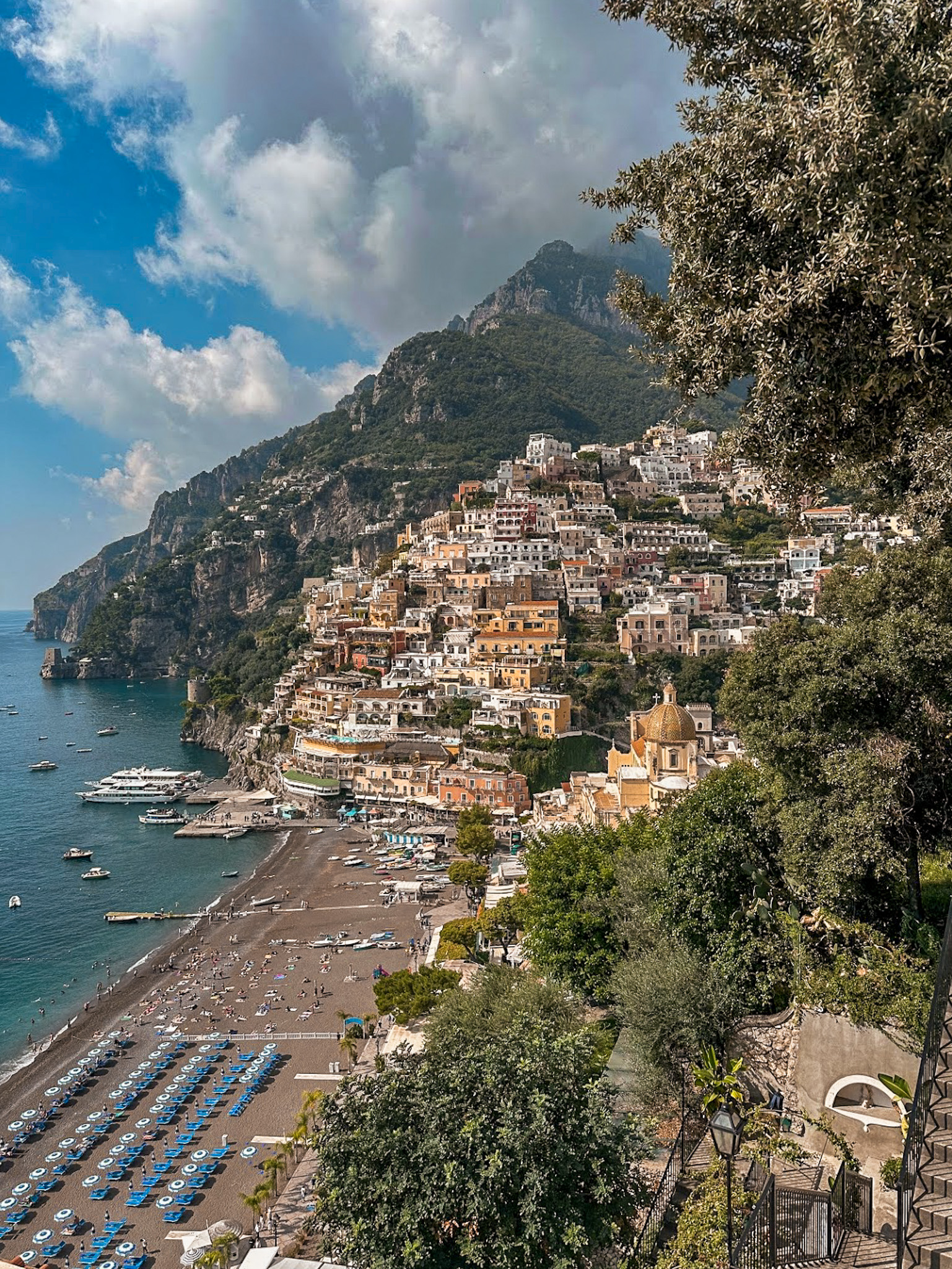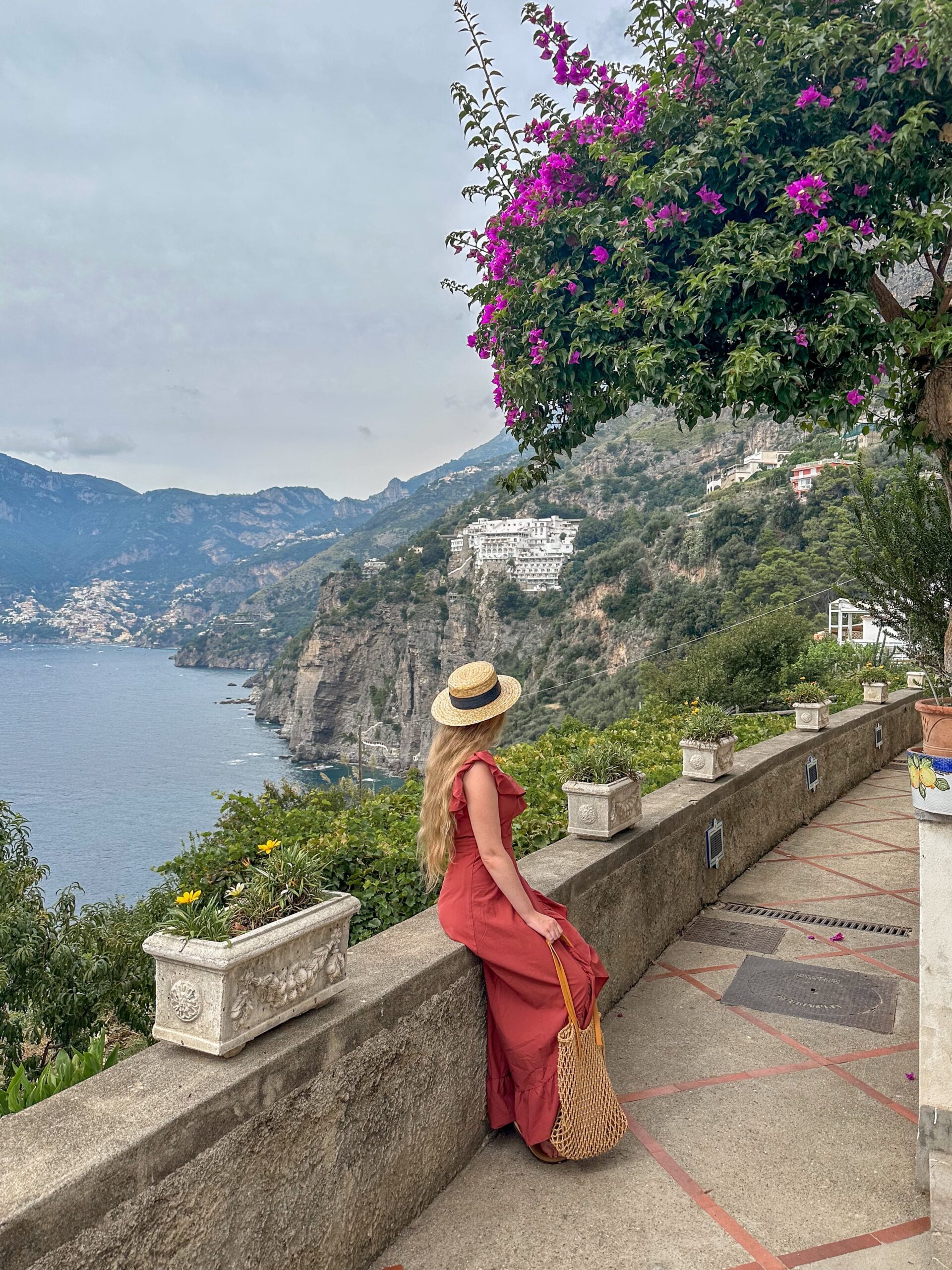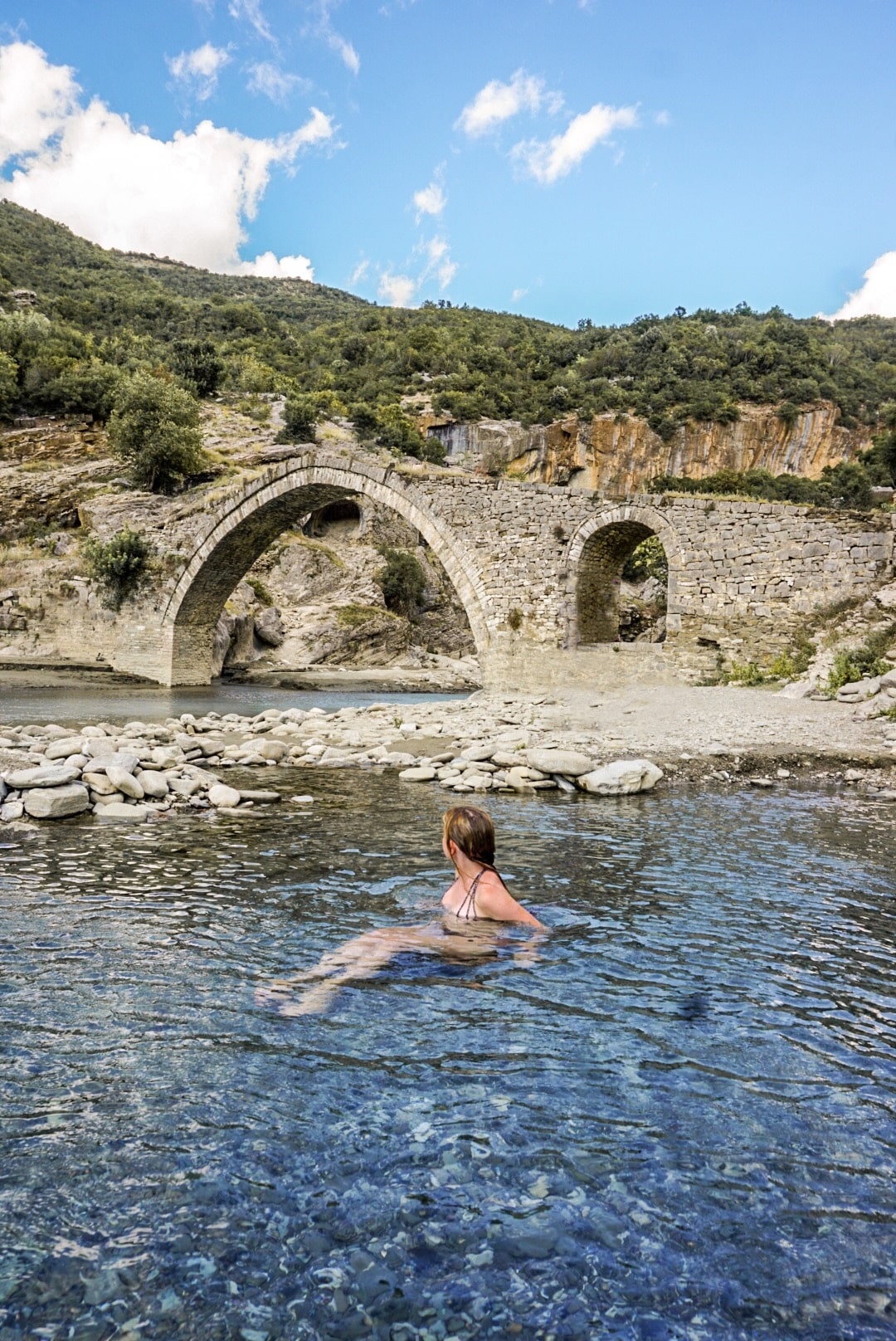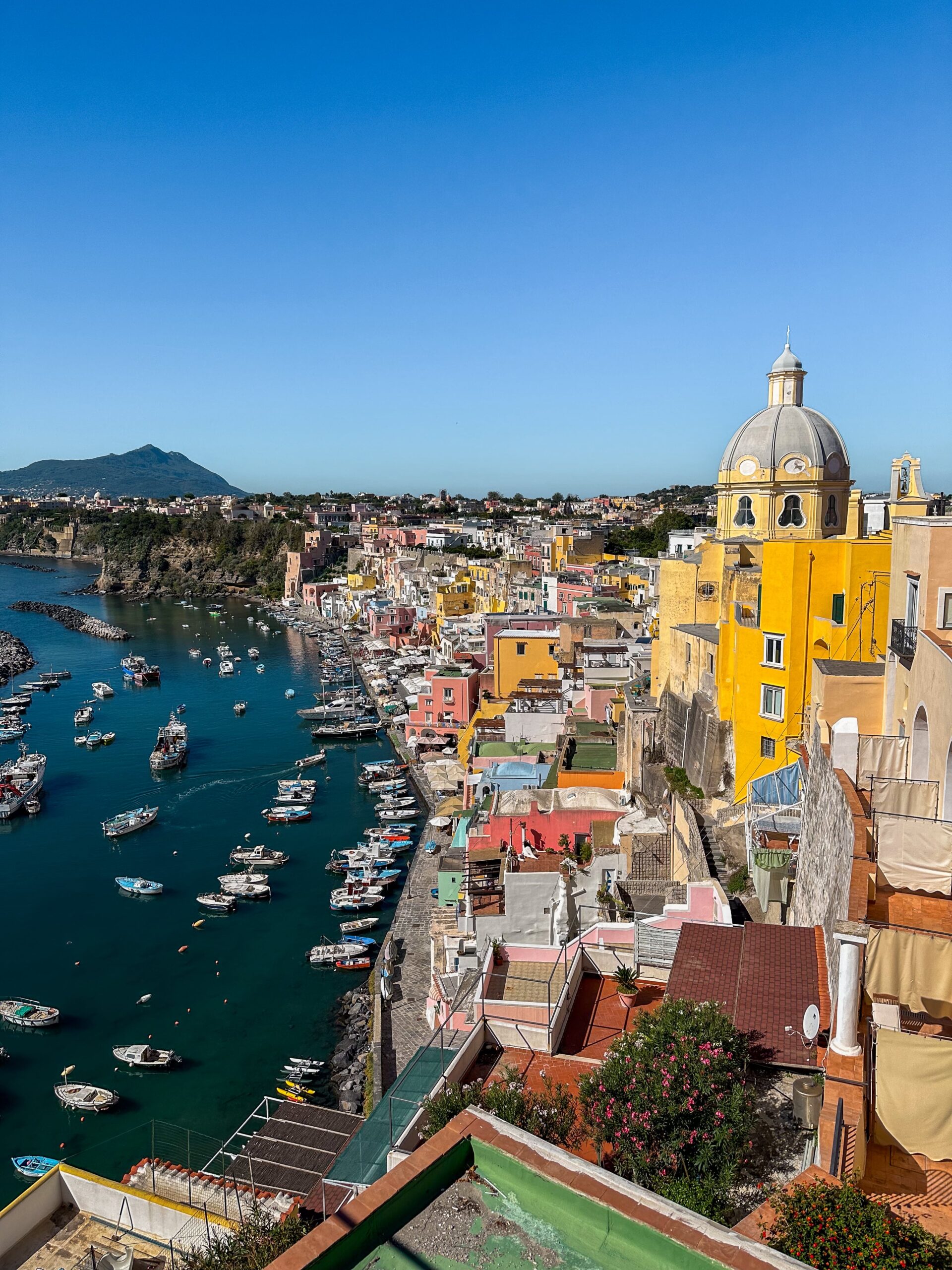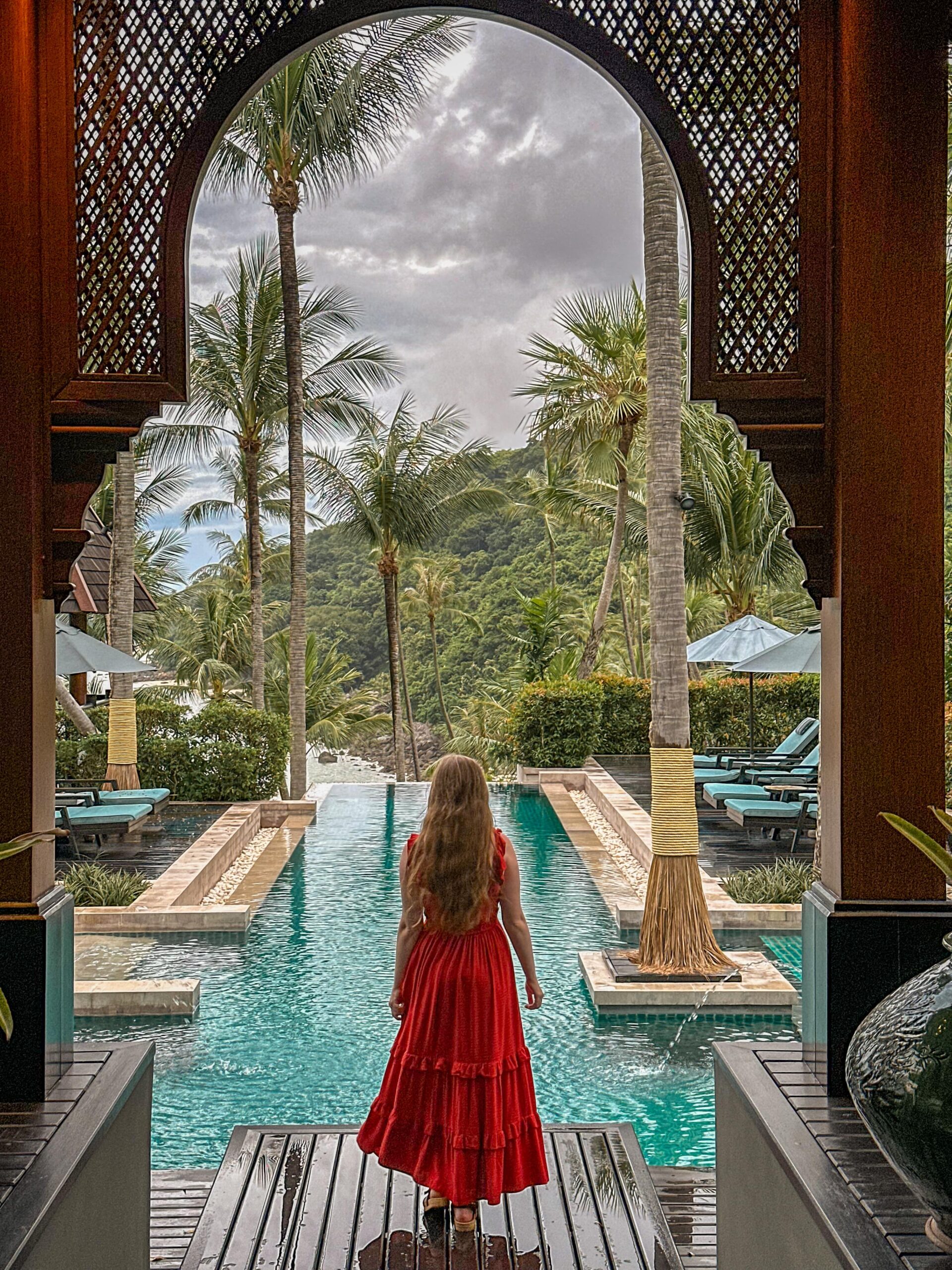Ultimate itinerary for spending 3 days in Rome
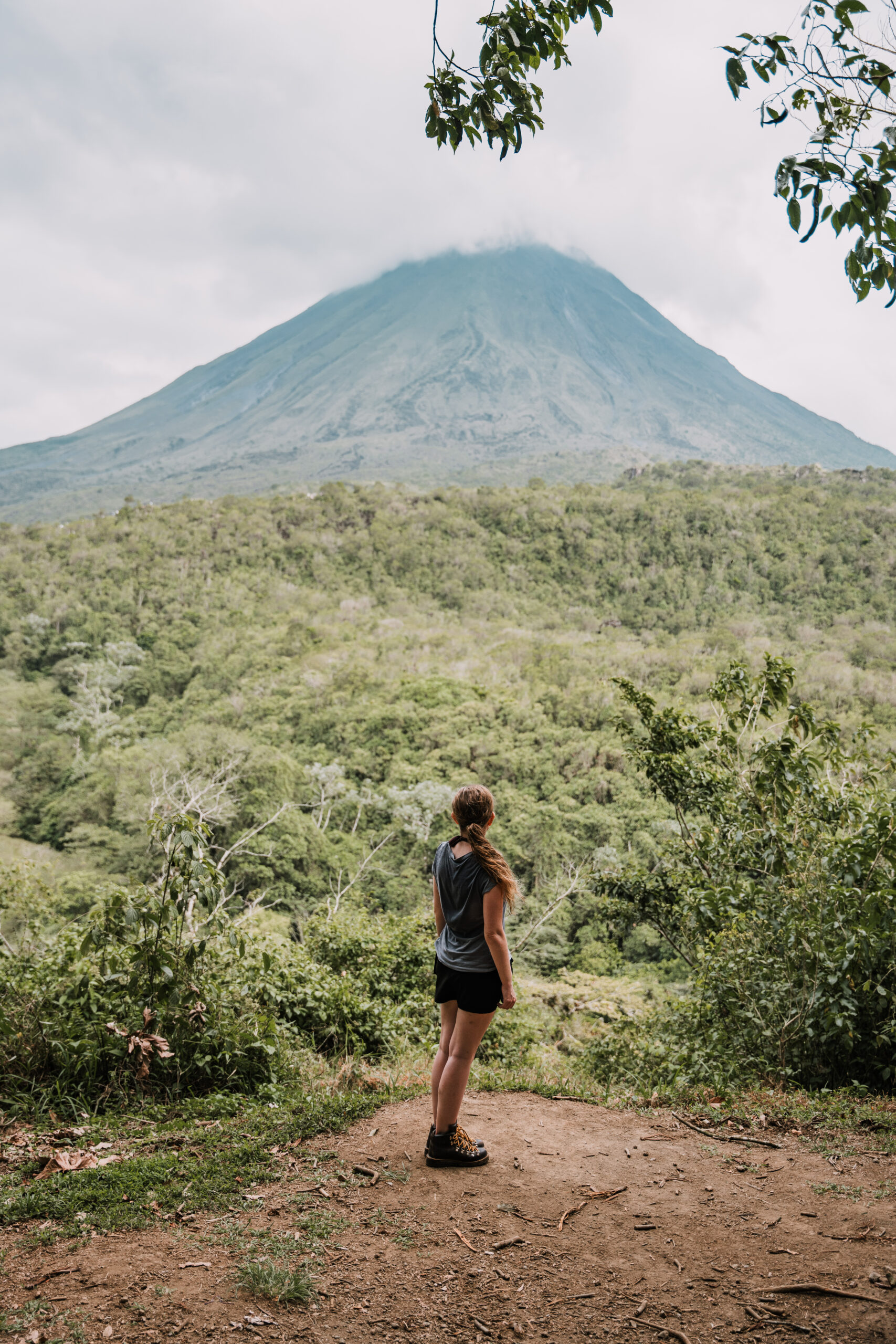
10 Days In Costa Rica | The Ultimate Itinerary
July 12, 2024

Costa Rica is a small country packed with so many incredible places to visit. From stunning waterfalls, pristine beaches, lush rainforests, rich culture, and abundant wildlife, Costa Rica has something to offer for every type of traveler, and it is hard not to fall in love with the beautiful country.
With so much to offer, planning just a 10-day Costa Rica Itinerary can be difficult. So many things to do and places to see – where to even begin!?
I’ve put together this 10-day Costa Rica itinerary that covers a little bit of everything the country has to offer: you’ll get the chance to visit tropical rainforests, see beautiful volcano views, explore a rare cloud forest, and relax at some of the best beaches in Costa Rica.
Here is everything you need to know about planning your 10-day itinerary to Costa Rica!
**This post contains affiliate links, which means I earn a small commission on purchases made through these links. All opinions are my own.
10-Day Costa Rica Itinerary Overview

- Day 1: Fly into San Jose and immediately head to La Fortuna
- Days 1-4: La Fortuna
- Days 4-6: Monteverde
- Days 6-10: Manuel Antonio
- Day 10: Drive back to San Jose Airport
Getting to Costa Rica
*Fly into San Jose*
There are two major airports in Costa Rica – San Jose Airport (Juan Santamaría International) and Liberia Airport (Daniel Oduber Quirós International Airport). Liberia is about a four-hour drive north of San Jose and is the better airport to fly into if you want to explore Costa Rica’s Guanacaste region, which is known for its luxury resorts and beautiful beaches.
For this 10-day Costa Rica itinerary, we will be flying into San Jose. San Jose, Costa Rica’s capital city, is located in the center of the country, which makes it a great starting point for your Costa Rican getaway!
Getting Around: Transportation in Costa Rica

Car rental
Hiring a car is the best way to explore the country if you want complete flexibility. While public buses are an option in Costa Rica, they are known for delays, being pricey (when traveling from destination to destination), and long ride times.
While Costa Rica is a fairly small country (about the size of West Virginia or Denmark), a lot of the attractions are far apart from each other, and many places are only accessible by car.
I highly recommend renting from Cartastic, which is a local car rental company based in San Jose. We had a wonderful experience with Cartastic – the owner, Daniel, met us at the airport (and even waited over an hour for us while we were stuck in the line at customs), and we had an extremely seamless experience. The rental prices at Cartastic were also very reasonable in comparison to other car rental companies and there are no hidden fees, which is unfortunately common for many car rental companies in Costa Rica.
If you want to take a look at other car rental options, I suggest using Get Rental Car to compare pricing across various rental companies in the Juan Santamaría International Airport.
Driving times in Costa Rica: Keep in mind that due to traffic and ever-changing road conditions, the actual time it takes to drive to a destination may be longer than what Google Maps or Wave says it will be. Expect to potentially add an extra hour to your drives between destinations in Costa Rica.
Public transportation
It’s possible to travel around Costa Rica via bus, however, don’t opt for the bus just because you want to save money on a rental car; buses are notoriously expensive in Costa Rica and you may end up spending the same amount (or more) on buses and taxis that you would if you just rented a car.
Check out Visit Costa Rica’s bus itinerary for more information about the bus schedule.
Traveling with a Tour Group
If you don’t feel comfortable driving in Costa Rica but don’t want to deal with figuring out the public bus system, consider traveling to Costa Rica with a group trip. I personally recommend Under30Experiences’ group trips. I actually spent my time in Manuel Antonio with them on their 5-day Costa Rica trip and had an amazing experience! Under30Experiences is a wonderful group trip company and their Extended Costa Rica trip visits all of the destinations listed in this blog post.
If you’re interested in joining Under30Experiences on one of their Costa Rica trips, you can use my code “wanderer” for $100 off your trip!
Things to Know Before Going to Costa Rica
Drinking tap water
Did you know Costa Rica is the only country in Central America where tap water is safe to drink? 92.5% of tap water is drinkable throughout the country, and it can be nearly guaranteed that the water at your hotel or vacation rental will be safe to drink. For peace of mind, you can contact management or the property owner and ask if the tap water is okay to drink.
USD & Colones
Costa Rica’s official currency is Colones, however, USD is accepted in most places around the country. Just keep in mind that when you pay in USD, oftentimes you will get change in Colones, so make sure you are aware of the conversion rate to ensure you received the proper change. The current conversion rate is roughly 500 Colones per one USD.
Do you need a 4×4 car?

Aside from the main highway, the majority of the roads in Costa Rica are not in the best condition. Many have lots of potholes, and some even have river crossings which would be very difficult or impossible to do with a regular sedan.
If you will be traveling to Costa Rica during the rainy season (May-November), a 4×4 will be an absolute must, as oftentimes roads will be washed out or completely underwater due to the heavy rainfall. The good news is that 4×4 rentals will be significantly cheaper during the rainy season since it is also Costa Rica’s low season.
Travel Insurance
Costa Rica is an adventurous country, and chances are that you will be participating in some activities that could potentially lead to injury. For this reason, I highly suggest purchasing travel insurance for your one week in Costa Rica. My personal recommendation is World Nomads because they include theft coverage as well as extensive medical coverage. Don’t skip out on travel insurance for this trip!
Gas prices
What we found to be super convenient about Costa Rica is that gas prices are consistent throughout the country. Even the gas stations that are right next to the airport have the same price for gas (I typically find gas prices near the airport to be much higher in most tourist destinations), which is great for filling up the rental car before returning it!
Book tickets to parks & attractions ahead of time
This holds especially true for peak season and during weekends, but many nature reserves have limited availability and will sell out. I learned this the hard way the first time I tried to visit the Monteverde Cloud Forest Reserve – although we arrived at 7:30 am on a Saturday, the reserve was packed and completely booked out for the next two days (this was during the weekend). Luckily, I was able to extend my time in Monteverde and was able to snag a day pass for the following Monday.
So if you plan to visit any popular nature reserves or national parks, I suggest booking a day pass at least one day in advance to ensure your entry.
Safety in Costa Rica & Scams to look out for
Overall, Costa Rica is a very safe country and there isn’t too much to worry about when visiting the country. The only thing to potentially watch out for is petty theft (something that happens in literally every country in the world) and a few scams that happen throughout the country.
While most Costa Ricans are friendly and honest, there are a few scams that travelers should be aware of:
- Parking Scams: In some tourist areas or busy parking lots, you’ll find individuals posing as parking attendants or “helpers” who charge unsuspecting visitors for parking in public spaces. This is extremely common at free popular tourist attractions, like El Choyin Hot Springs and El Salto in La Fortuna. Usually, you can avoid confrontation with these people by simply parking slightly further down the road and walking to the destination.
- Currency Exchange Scams: Be cautious when exchanging currency, especially on the street or in unofficial establishments. Stick to reputable banks, exchange bureaus, or your hotel for currency exchange services to avoid being shortchanged. Also note that since USD is taken so frequently, and change is given in a mix of USD and Colones, I never needed to use a currency exchange in the over 3 weeks that I was in Costa Rica (and I didn’t bring any along at the start of my trip).
- Taxi Scams: While most taxi drivers are honest, there have been isolated cases of overcharging or taking unnecessarily long routes to increase the fare. Use licensed taxis with working meters or agree on a fare before starting the journey. Apps like Uber can also provide a transparent pricing structure.
- Tourist Traps: Some tourist attractions or shops may inflate prices for tourists. Researching prices beforehand, negotiating where possible, and avoiding overly aggressive vendors can help avoid falling into tourist traps.
La Fortuna
DAYS 1-3
I suggest starting your trip with 3 days in the La Fortuna area, which is known as the gateway to Arenal National Park. There is lots to do in this area and you will really get the quintessential Costa Rican feel, from the lush rainforests, abundant wildlife, and volcano views.
Things to do in La Fortuna
Arenal National Park

Arenal National Park is one of the popular places to visit while in La Fortuna. Arenal National Park offers beautiful volcano views, lush rainforest hikes, and an abundance of wildlife viewing.
Here are some of the most popular things to do in Arenal:

- Místico Arenal Hanging Bridges: Iconic rainforest reserve in Arenal, home to an abundance of plant and wildlife species, lush gardens, waterfalls, stunning views of Arenal Volcano, and six hanging bridges overtop the rainforest canopy.
- Arenal 1968 Volcano Trail: The most famous hiking trail in Arenal, with trails running through lava fields, beautiful views of Arenal Volcano, and lots of wildlife. The only downside is the high entrance fee, which is currently $25 per person on a self-guided hike.

- Mirador el Silencio: Private nature reserve right outside of Arenal National Park, with incredible views of Arenal Volcano, lovely trails through dense rainforests, and lots of wildlife. We opted to do Mirador el Silencio over the Arenal Volcano View and Lava trails because it was less busy, and the entrance fee was cheaper at just $10 per person. There were also lava field trails so we didn’t feel like we missed out on anything at the Arenal Volcano View and Lava Trails.
- Ziplining, Canyoning, and White Water Rafting: Arenal is perfect for adventure seekers looking to participate in some of Costa Rica’s most popular adrenaline activities. Below are some of the top-rated adventure experiences in Arenal:
La Fortuna Waterfall

La Fortuna Waterfall is one of the most beautiful waterfalls in the country that allows swimming. It is a $20 entry fee and it takes about 15-20 minutes to hike down the 400 stairs to the falls. What goes down must come up, so keep in mind that you will need to walk up 400 stairs, which is absolutely worth it but may provide difficulty to those with physical disabilities.
As you arrive at the waterfall, you have to climb over some rocks if you want to get in the water, so make sure to bring water shoes with you. Be careful, as the rocks are quite slippery. I saw a man take a tumble on the rocks and it looked quite painful – so take your time getting in and be careful not to slip!
The water is quite choppy due to the sheer force of the waterfall, so most people stick to the area close to the rocks. Be careful, and don’t get too close to the waterfall as it is extremely forceful. The water is pretty chilly but I found it to be refreshing amidst the hot and humid weather in La Fortuna.

To the left of the waterfall is a river you can also swim in. The water here is much calmer and it is definitely a more relaxing swim spot. The water is also beautiful and clear, and you can see lots of fish swimming around you!
The Souvenir Shop at La Fortuna Waterfall: If you plan to pick up any souvenirs during your trip to Costa Rica, I actually recommend shopping at La Fortuna’s souvenir shop! I found it was surprisingly cheaper than many of the gift shops in La Fortuna town, and sold a lot of the same items as the pricier shops in town.
Pro-tip for Visiting La Fortuna Waterfall: Arrive early in the morning for the best experience possible. La Fortuna Waterfall is one of the most popular attractions in the area, and by 10 am it is flooded with people. For a more tranquil experience, arrive before 9 am. Entry opens at 7 am and when we got there around 7:30, there were a few groups of people already there, but nothing crazy.
Río Celeste Waterfall

Río Celeste Waterfall is one of Costa Rica’s most iconic natural wonders. It is famous for its Gatorade-blue color and is known as one of the bluest waterfalls in the world.
Río Celeste Waterfall is located inside of Volcán Tenorio National Park, which is about an hour and a half drive from La Fortuna. Just like the La Fortuna Waterfall, I suggest arriving as early as possible (the park opens at 8:00 am) to experience the waterfall without the crowds, as it gets very busy during peak season.
It is also possible to visit Río Celeste Waterfall from La Fortuna on a guided day tour. If you have a rental car, I suggest just doing the drive yourself, but if you don’t have a car or don’t feel like driving 1.5 hours each way, a guided tour is a great option.

Rio Celeste Waterfall is best experienced during the dry season, as it loses its bright blue color during the rainy season. I’m sure it would still be beautiful during the rainy season, but don’t go during that time of year expecting to see the vivid blue color that makes the waterfall so famous.
>>> For more details on visiting Rio Celeste Waterfall, check out my in-depth guide to Everything You Need to Know Before Visiting Rio Celeste Waterfall.
El Choyin Free Hot Springs
No trip to La Fortuna is complete without experiencing the hot springs that the area is so famous for. Not only are the El Choyin Hot Springs free, but the water is actually the same water used to fill all of the expensive resort hot springs. The only difference is that the El Choyin Hot Springs is in a natural setting, which I personally prefer to a hot springs resort.
Luxurious Resort Hot Springs
If you are interested in splurging and want a more luxurious experience, here are a few hotels that offer day passes to their hot springs:
- Tabacon Hot Springs ($89 for a day pass)
- The Springs Resort & Spa at Arenal ($118 for a 2-day pass)
- Baldi Hot Springs ($44 for a day pass)
- Ecotermales Hot Springs ($45 for a day pass)
Note that if you stay in these hotels you will get complimentary access to their hot spring spa.
El Salto
La Fortuna is completely landlocked and offers limited options to swim and cool off, outside of hotel pools. El Salto is a free water hole with a rope swing that you can use to swing off and jump into the refreshing water. This spot is where tourists and locals alike come to cool off, so expect crowds – especially during the dry season and weekends.
Sloth Tours

Is it your goal to see a sloth in the wild while in Costa Rica? While you may get lucky and see one during one of your hikes or nature walks, they can be very difficult to spot without a trained guide.
There are tons of well-reviewed sloth tours in La Fortuna, most of which guarantee sloth sightings. There is also an option to do a self-guided tour at the Bogarin Trail, which is a forested area inside of La Fortuna town. If you go for the self-guided tour on this trail, you’ll likely still see sloths, as there will be other groups stopped and pointing out where the sloths are. You can also ask the ticket office where along the trail you are most likely to see the sloths that day – sloths are notoriously very slow so they tend to stick to one spot for the day. If you want a guaranteed chance at seeing a sloth, a guided tour is also a great option. Check out one of the top-rated sloth tours in La Fortuna here.
Coffee & Chocolate Tours
You can find Coffee & Chocolate plantation tours throughout Costa Rica, and La Fortuna is one of the best areas to go on one of these tours. We chose to do the Chocolate and coffee farm tour Don Jorge because of the incredible reviews – and it did not disappoint! The tour lasted about 3 hours and we got a tour of the plantation and a demonstration on how cacao, sugar cane, and coffee beans are extracted and processed. To top it all off, we got to taste delicious fresh Costa Rican coffee, sugar cane juice, fruit, chocolate, wine, and liquor. We even got to take home our own chocolate that we made with the group! It was an amazing experience and definitely a highlight of our time in La Fortuna!
Where to Stay in La Fortuna

The links I provided below include the best price I could find for these hotels.
- Luxury ($250 to $700+ per night):
- Nayara Springs: Exclusive adults-only resort offering luxurious villas with private plunge pools and lush tropical surroundings.
- The Springs Resort and Spa: Lavish resort featuring natural hot springs, multiple pools, and stunning views of the Arenal Volcano.
- Tabacon Thermal Resort & Spa: Renowned resort known for its extensive thermal hot springs and beautifully landscaped gardens.
- Arenal Kioro Suites & Spa: Luxurious hotel offering spacious suites with breathtaking views of the Arenal Volcano and top-notch amenities.
- Amor Arenal Hotel: Boutique hotel providing luxurious accommodations and private hot springs nestled in the lush rainforest.
- Midrange ($100 to $250 per night):
- Baldi Hot Springs Hotel & Spa: Famous resort offering 25 thermal pools, cozy rooms, and incredible spa treatments.
- Volcano Lodge Hotel & Thermal Experience: Charming hotel offering comfortable accommodations, beautiful gardens, and access to thermal hot springs.
- Arenal Manoa & Hot Springs Resort: Tranquil resort with spacious rooms, scenic views of Arenal Volcano, and relaxing hot springs.
- Arenal Springs Resort & Spa: A picturesque resort featuring cozy bungalows, stunning volcano views, and rejuvenating hot springs.
- Budget ($50 to $100 per night):
- Hotel Los Lagos Spa & Resort: Family-friendly resort with spacious rooms, multiple pools, and extensive thermal springs and spa facilities.
- Arenal Montechiari Hotel: Tranquil hotel featuring charming bungalows, lush gardens, and stunning views of Arenal Volcano.
- Hotel San Bosco: Centrally located hotel in La Fortuna offering clean, comfortable rooms and a refreshing pool, perfect for exploring the town and nearby sights.
- Backpacker ($15 to $50 per night):
- Alpha Arenal: Rustic hostel offering a mix of private rooms and dormitories, and a welcoming atmosphere.
- Selina La Fortuna: Trendy hostel in the center of La Fortuna, offering private rooms and dormitories, a great pool area, and a lively social atmosphere.
- Palacios Arenal: Unique stay with a local family, offering private rooms and dormitories, with a chill hangout area and coworking space.
- Arenal Poshpacker: Chill hostel offering private rooms and dormitories, with a lovely garden area, pool with swim-up bar, and lots of outdoor hammocks for relaxing.
Where to Eat & Drink in La Fortuna
- Sloffee: A cozy open-air café known for its specialty coffee and relaxed atmosphere, the perfect place to stop and grab a coffee and pastries.
- Travesía Restaurant: A casual restaurant with a fusion of local and international cuisine. They cook their dishes with locally sourced ingredients and offer stunning views of the Arenal Volcano.
- El Chante Verde: A trendy restaurant set in a serene garden, specializing in plant-based cuisine.
- Tierra Mia Restaurante: A warm and vibrant restaurant offering delicious traditional Costa Rican dishes.
Monteverde
DAYS 4-6

Monteverde is located about 2.5 hours from La Fortuna and is known for its cloud forests and incredible birdwatching.
What makes a cloud forest different from a rainforest is that cloud forests are cooler, found at higher altitudes, and rely on moisture from cloud cover and fog drip. They have unique flora and fauna that have adapted to these conditions and have lower light levels and increased vulnerability to climate change compared to rainforests.
Cloud forests only make up 1% of the earth’s forests, and Costa Rica is home to a majority of these cloud forests. Cloud forests are extremely unique and walking through a cloud forest feels like you are walking into an enchanted forest straight out of a fairy tale, due to its consistent cloud coverage, misty atmosphere, and abundance of rare bird and plant species.
Visiting a cloud forest is definitely a “must-do” in Costa Rica. Keep in mind the roads around Monteverde are not in the best condition, as there are lots of potholes and gravel/dirt roads. Many people will say a 4×4 is necessary for Monteverde, however, I honestly think you would probably be fine without one during the dry season. However, for maximum comfort and peace of mind, I do suggest renting a 4×4 for exploring this region.
Things to do in Monteverde
Cloud Forests
Monteverde is home to three different Cloud Forests. The biggest, and most famous, is the Monteverde Cloud Forest Reserve, which is 765 acres, offering lots of hiking trails ranging from easy to intermediate.
If you could only visit one of the cloud forests, you should visit the Monteverde Cloud Forest Reserve. However, if you have extra time, or if you will be there on a weekend and want to avoid the crowds, definitely consider visiting Santa Elena Cloud Forest Reserve and/or Children’s Eternal Rainforest.
- Monteverde Cloud Forest Reserve: $25 entry fee
- Santa Elena Cloud Forest Reserve: $19 entry fee
- Children’s Eternal Rainforest: Donations-based entry fee
Curi-Cancha Reserve

The Curi-Cancha Reserve is a private nature reserve in Monteverde. While it is not a cloud forest, it is still a great place for bird-watching.
We saw more wildlife in the Curi-Cancha Reserve than we did in the cloud forest. Among the animals we saw were several large families of pizotes, the local word for the white-nosed coati that you can find in Costa Rica, and lots of adorable spider monkeys – including a baby on its mother’s back! Spider monkeys are not common throughout Costa Rica, apart from the remote Oso Peninsula, so we felt really fortunate to be able to see them at the Curi-Cancha Reserve!!!
Ziplining in Monteverde
Costa Rica is renowned for ziplining, and Monteverde is one of the best places in Costa Rica to go ziplining. The ziplines in Monteverde can be longer and higher due to the mountainous terrain, offering exhilarating rides with sweeping mountain views.
I opted to go ziplining at 100% Aventura, because it boasts the longest zipline in Costa Rica. It has a total of 10 zip lines, a hammock bridge, one rappel, and a Tarzan swing. The experience was $56 per person and it was absolutely worth it! You also get the chance to do 2 “Superman” style ziplines, where you literally feel like you are flying above the canopy.
Night Tours in Monteverde

Night tours are common throughout Costa Rica and Monteverde is known for having some of the best night tours in the country.
There are a ton of night tour options in Costa Rica, mostly ranging from $30-$60 per person. We mostly saw frogs and insects, pizotes, as well as a porcupine and tarantula. Some of the other animals you may see include sloths, snakes, and other local animal life that isn’t out and about during the day. It’s a really cool way to see biodiversity you wouldn’t be able to see during the daytime, and you should definitely add a night tour to your list of “must-things” to do in Costa Rica.
Guided Birdwatching

Monteverde is a bird watcher’s paradise, and in order to maximize your likelihood of seeing lots of rare birds, I highly recommend hiring a guide. We did not hire a birdwatching guide, but we got lucky and were able to see several rare quetzals and other bird species because some friendly tour guides we encountered let us look through their telescopes after we asked what type of bird they were looking at.
While we were lucky and still got to see a lot of birds, your likelihood of spotting tons of birds is way higher with a guide. I still have no idea how the guides we encountered were able to spot some of the birds they pointed out to us!
If you want to save money or would prefer to explore the cloud forest at your own pace, just keep an eye out for stopped groups pointing in the trees, and ask what it is they are pointing at. We found the guides to be very friendly and more than happy to point out the birds to us, even though we were not part of the tour group.
Where to Stay in Monteverde

- Luxury ($200 to $500+ per night):
- El Silencio Hotel: Monteverde’s most luxurious hotel, offering gorgeous villas with private jacuzzis, multiple high-end restaurants, and rejuvenating spa and yoga experiences.
- Hotel Belmar: Luxurious eco-friendly hotel offering elegant rooms, stunning views, and a serene forest setting.
- Monteverde Lodge & Gardens: Beautiful lodge with spacious rooms, lush gardens, and excellent service, perfect for a tranquil getaway.
- Senda Monteverde Hotel: Luxury boutique hotel offering stylish accommodations, personalized service, and an immersive cloud forest experience.
- Midrange ($100 to $200 per night):
- Hotel Poco a Poco: Modern hotel with comfortable rooms, a pool, and a convenient location near the town center.
- Cloud Forest Lodge Monteverde: Peaceful lodge set in the forest, offering comfortable rooms and guided nature walks.
- Cala Lodge: Boutique hotel providing rustic charm, comfortable accommodations, and beautiful garden views.
- Hotel Flor de Bromelia: Cozy hotel with beautiful views overlooking Monteverde, nestled in the rainforest.
- Budget ($50 to $100 per night):
- La Guayaba Monteverde: Budget-friendly a 5-minute walk from Santa Elena Center, with comfortable accommodations, delicious included breakfast, and a laid-back atmosphere.
- Calathea Lodge Monteverde: Lovely affordable hotel, some rooms including a fully-equipped kitchen, with delicious breakfast included and beautiful sunset views.
- Apartments Monte Luna Mountain View: Wonderful affordable apartments, with incredible views
- The Green Tree Lodge: Treehouse-style hotel with cozy rustic rooms, and beautiful mountain views.
- Backpacker ($15 to $50 per night):
- Selina Monteverde: Trendy hostel offering a mix of dorms and private rooms, a vibrant social scene, and modern amenities.
- Pension Santa Elena: Popular backpacker hostel with budget accommodations, a communal kitchen, and a friendly atmosphere.
- Sleepers Sleep Cheaper Hostel: No-frills hostel providing basic accommodations, a friendly vibe, and budget rates.
- Camino Verde Bed & Breakfast Monteverde: Cozy bed and breakfast with affordable rooms, complimentary breakfast, and great hospitality.
- OutBox Inn: Relaxed hostel offering dormitory-style rooms and private rooms, a beautiful garden, and a spacious common area.
Where to Eat in Monteverde
- Stella’s Monteverde: Local café set in a beautiful garden right outside of Monteverde Cloud Forest. This is the perfect place to grab a bite to eat before or after exploring the cloud forest. They have lots of bird feeders in the garden so you will see lots of beautiful, tropical bird species while you eat your delicious food!
- Restaurante Ticos: Authentic Costa Rican restaurant popular with locals, located just outside of Santa Elena town. The portions are generous, the food is delicious, and the views are incredible!
- Restaurante Boca2 café Monteverde: Cute café in the center of Santa Elena, offering delicious coffee, homemade pastries, and casual meals.
- San Lucas Treetop Dining Experience: An unforgettable dining experience set high in the treetops, San Lucas offers exquisite high-end cuisine and breathtaking views. It’s pricey, but splurge for the experience if that’s your thing!
- Taco Station: Mother-daughter run take-out taco spot with amazing birria tacos! You order through WhatsApp, and the English-speaking daughter will respond to you with a surprisingly seamless ordering process.
>>>Check out my full itinerary to 2 Days in Monteverde for a more in-depth guide to the region.
Manuel Antonio
DAYS 6-10

Manuel Antonio is located on the Central Costa Rican Coast and is home to some of the best beaches in Costa Rica. There is lots to do in this area for every type of traveler, whether you’d prefer relaxing at a beach or luxurious resort, or you prefer adventurous rainforest hikes, canyoning, and ziplining.
Things to do in Manuel Antonio
Manuel Antonio National Park

Manuel Antonio is the second most popular national park in Costa Rica and is known for its abundant wildlife and stunning beach.
The park itself is not very large and can be explored in just a couple of hours. Manuel Antonio Beach, which is located inside the park, is known as one of the best beaches in Costa Rica, so make sure to set aside a few hours for relaxing and swimming.
Canyoning in Manuel Antonio
Canyoning in Costa Rica is a must if you love adventure! I did the guided canyoning with Quepo Canyoning, which included waterfall rappelling, a suspension bridge crossing, a “monkey drop” assisted free fall, tree climbing ladders, zip lines, and a treetop rappel.
If you are afraid of heights, you may want to opt out of canyoning, but with all of the safety gear and guide expertise, we felt very safe and had a great experience. Keep in mind that if you visit during the rainy season, the waterfall will be quite strong, making for an incredibly fun, but crazy (and very, very wet) experience!
Beach Hopping Manuel Antonio’s Beaches

Some of the best beaches in Costa Rica are in the Manuel Antonio area, and you will definitely want to dedicate some time to exploring the beaches in the area.
Some of the best beaches in Manuel Antonio include Manuel Antonio Beach, Espadilla Beach & Espadilla South Beach, Biesanz Beach, and Playa Tulemar. Some of these beaches do have pretty strong waves, which is perfect for surfing, however, if you are traveling with children or prefer more relaxing swims, stick to calmer beaches like Manuel Antonio Beach and Biesanz Beach.
Pro Tip: Unless you can tie your beach bag to a lounge chair, don’t sit too close to the treeline. There are lots of monkeys in the area that are known to steal!! Locals call them the “monkey mafia”.
Surf Lessons at Playa Espadilla
Manuel Antonio is also a great place to take surf lessons, as the waves are quite beginner-friendly. I didn’t personally do surf lessons, but some of the people in my travel group did it with Dante’s Water Sports and they had a great experience. Most of them were able to stand up several times and ride the waves!
Where to Stay in Manuel Antonio
- Luxury ($300 to $800+ per night):
- Arenas del Mar Beachfront & Rainforest Resort: Luxurious eco-resort offering beachfront accommodations, exquisite dining, and stunning rainforest views.
- Tulemar Resort: High-end resort featuring private villas, exceptional amenities, and breathtaking ocean and jungle views.
- Gaia Hotel & Reserve: Adults-only boutique hotel with luxurious suites, a private nature reserve, and top-notch service.
- Makanda by the Sea: Upscale resort offering exclusive villas, a serene atmosphere, and incredible views of the Pacific Ocean.
- Si Como No Resort, Spa & Wildlife Refuge: Luxurious eco-resort with comfortable accommodations, a full-service spa, and a wildlife refuge on-site.
- Midrange ($150 to $300 per night):
- Hotel La Mariposa: Beautiful hotel with with some rooms offering panoramic ocean views of Manuel Antonio National park, lovely gardens, and a stunning infinity pool.
- Parador Nature Resort and Spa: Lovely resort with spacious rooms, extensive amenities including 3 outdoor pools and spa services, and beautiful tropical gardens.
- Hotel Costa Verde: Popular hotel featuring spacious rooms with unique decor, and close proximity to Manuel Antonio National Park. Book the Converted aircraft room for the most unique experience!
- Hotel San Bada Resort & Spa: Family-friendly resort with comfortable accommodations, a large pool, and direct access to Manuel Antonio National Park.
- Budget ($50 to $150 per night):
- Oasis Diverse Adults Retreat: Adult’s only upscale bed and breakfast, featuring a beautiful pool, gym, and daily breakfast.
- Hotel Villas Lirio: A charming hotel offering comfortable accommodations, a nice pool, and a convenient location in the center of Manuel Antonio Town.
- Hotel Villas Nicolas: Adult’s only hotel featuring cozy villas, a tranquil setting, and easy access to nearby attractions.
- Peace of Paradise: Charming guesthouse surrounded by greenery, offering simple and comfortable rooms and friendly service.
- Hotel Playa Espadilla: Lovely beachfront hotel with clean rooms, a refreshing pool, and close proximity to both the beach and the national park.
- Backpacker ($20 to $50 per night):
- Selina Manuel Antonio: Trendy hostel offering a mix of dorms and private rooms, a lively social scene, and modern amenities.
- Hostel Plinio: Unique hostel in a jungle setting, featuring dormitory-style rooms, a communal kitchen, and a friendly vibe.
- Blue Morpho House Hostel: Simple family-friendly hostel in a relaxing setting, offering dorms and private rooms.
- Teva Jungle Hotel and Hostel: Eco Hostel in a jungle setting, with private hiking trails, an outdoor pool, and beautiful gardens, offering a mix of dorm rooms and private rooms.
Where to Eat in Manuel Antonio
- Food Truck “En Todas”: Funky school bus-turned-food truck in Manuel Antonio, offering a variety of delicious street food options. Perfect for grabbing a quick and tasty bite right near the beach!
- El Avion: This unique restaurant is set in an old converted airplane with stunning sea views. El Avion serves up fresh seafood and international dishes in a one-of-a-kind setting.
- Emilio’s Cafe: Charming café known for its exceptional coffee and divine desserts. Emilio’s Cafe offers a diverse menu with fresh, healthy options and panoramic ocean views.
- Morpho Beach Bar: Laid-back beachfront bar where you can enjoy tropical cocktails, fresh seafood, and a relaxed atmosphere right by the ocean. Perfect for unwinding after a day at the beach.
- El Wagon: Casual restaurant with a fun, rustic vibe specializing in wood-fired pizzas and comfort foods. El Wagon is a great spot for a family meal or a relaxed night out.
Conclusion
Costa Rica is an incredibly diverse country with lots of activities to offer for every type of traveler. While you could easily spend months exploring the country and still just scratch the surface, it is still a perfect destination for a 10-day holiday (especially if you are flying from the US!).
Overall, my biggest advice is to not try to pack *too* much into your 10-day Costa Rica Itinerary and prioritize the activities you are most interested in. You can always come back to do the things and see the places you missed! I also highly suggest researching the time of year you will be visiting and planning accordingly. Your trip during the rainy season might look a lot different than if you were to visit in the dry season, so be prepared, do your research, and plan as much as possible beforehand.
Like this post? Pin it for later!



Related Posts
- 3 Days in Rome | Ultimate Itinerary
- 7 Reasons Why Croatia Is The ULTIMATE Travel Destination
From Dubrovnik, Split, Zadar, and the islands, Croatia is one of Europe's finest gems, that…
- The Ultimate Guide to Korčula, Croatia
Korčula, Croatia may not be the most popular island, but it is by far one…
Leave a Reply Cancel reply
HOME
ABOUT
Travel tips
BLOG
SHOP
destinations
Sign up for updates:
privacy
terms
Exploring the world, one step at a time.
